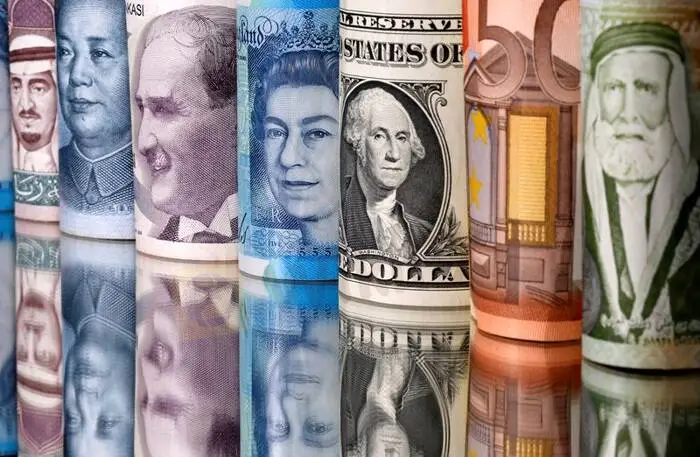简体中文
繁體中文
English
Pусский
日本語
ภาษาไทย
Tiếng Việt
Bahasa Indonesia
Español
हिन्दी
Filippiiniläinen
Français
Deutsch
Português
Türkçe
한국어
العربية
Leaping yields buttress dollar ahead of Fed meeting
Abstract:The dollar was firm on Wednesday after a rip higher in U.S. yields vaulted it up sharply on the euro overnight, putting it back above support levels that have held for the past few months in anticipation of rising U.S. interest rates.

The euro fell about 0.7% on Tuesday, its sharpest daily drop in a month, and is back on its 50-day moving average at $1.1323. Two-year Treasury yields have leapt 15 basis points over two sessions to cross 1% and benchmark 10-year yields stand at a two-year high of 1.8842%. [US/]
The dollar has also regained support levels against the Australian and New Zealand dollars and held sterling below its 200-day moving average.
The U.S. Federal Reserve meets to set policy next week and traders are growing anxious about another hawkish surprise.
“A lot of (Fed) officials left us with hawkish impressions right before going quiet (ahead of the meeting),” NatWest markets strategist Jan Nevrusi said
“After (Tuesdays) price action, there is slightly more than one hike priced in for the March meeting, and going into next week, I would imagine it oscillates within the lower end of the 25-50 basis point range.”
Fed funds futures are pricing three more hikes in 2022. Analysts say dollar strength could extend if traders start expecting rates to rise not just faster but further as well.
“We expect the U.S. rate rethink – and this latest shift higher in yields reflects a push higher in the implied terminal rate, rather than just a faster pace of increases initially – to support the dollar in the first half of the year,” Societe Generale strategist Kit Juckes said.
Moves in the U.S. bond market unsettled equity investors, underpinning the safe-haven yen, which has held at 114.67 to the dollar.
The U.S. dollar index rose 0.5% on Tuesday and held that gain at 95.768 on Wednesday.
Traders also have a wary eye on a delicate situation in Ukraine. U.S. Secretary of State Antony Blinken will seek to defuse a crisis with Moscow when he meets Russias foreign minister in Geneva this week.
The Australian dollar held below its 50-day moving average at $0.7187. It has struggled to break resistance just below 73 cents. The kiwi was pinned at $0.6771.
Sterling has taken a knock in recent sessions but will be in focus later on Wednesday when British inflation figures are due.
Annual headline inflation is seen hitting an almost decade-high 5.2% and a surprise could trigger further bets on Bank of England rate hikes and renew the pounds rally.

Disclaimer:
The views in this article only represent the author's personal views, and do not constitute investment advice on this platform. This platform does not guarantee the accuracy, completeness and timeliness of the information in the article, and will not be liable for any loss caused by the use of or reliance on the information in the article.
Read more

Will the Euro and US Dollar Reach Parity in 2025?
Euro-dollar parity sparks debate again as 2025 approaches, with multiple factors shaping the exchange rate outlook.

US Dollar Surge Dominates Forex Market
The global forex market continues to show volatility, with the U.S. dollar fluctuating last week but overall maintaining a strong upward trend. How long can this momentum last?

Oil Prices Soar for 5 Days: How Long Will It Last?
Last week, the global oil market saw a strong performance, with Brent crude and WTI crude prices rising by 2.4% and around 5% respectively. Oil prices have now posted five consecutive days of gains. But how long can this rally last?

How Big is the Impact of the USD-JPY Rate Gap on the Yen?
The U.S. Federal Reserve's repeated rate cuts and the narrowing of the U.S.-Japan interest rate differential are now in sight. So, why is the U.S.-Japan interest rate differential so important for the yen’s safe-haven appeal, especially when global economic uncertainty rises?
WikiFX Broker
Latest News
SQUARED FINANCIAL: Your Friend or Foe?
Big News! UK 30-Year Bond Yields Soar to 25-Year High!
High-Potential Investments: Top 10 Stocks to Watch in 2025
Why Is Nvidia Making Headlines Everywhere Today?
Discover How Your Trading Personality Shapes Success
US Dollar Insights: Key FX Trends You Need to Know
FINRA Charges UBS $1.1 Million for a Decade of False Trade Confirmations
BI Apprehends Japanese Scam Leader in Manila
Bitcoin in 2025: The Opportunities and Challenges Ahead
Join the Event & Level Up Your Forex Journey
Currency Calculator






